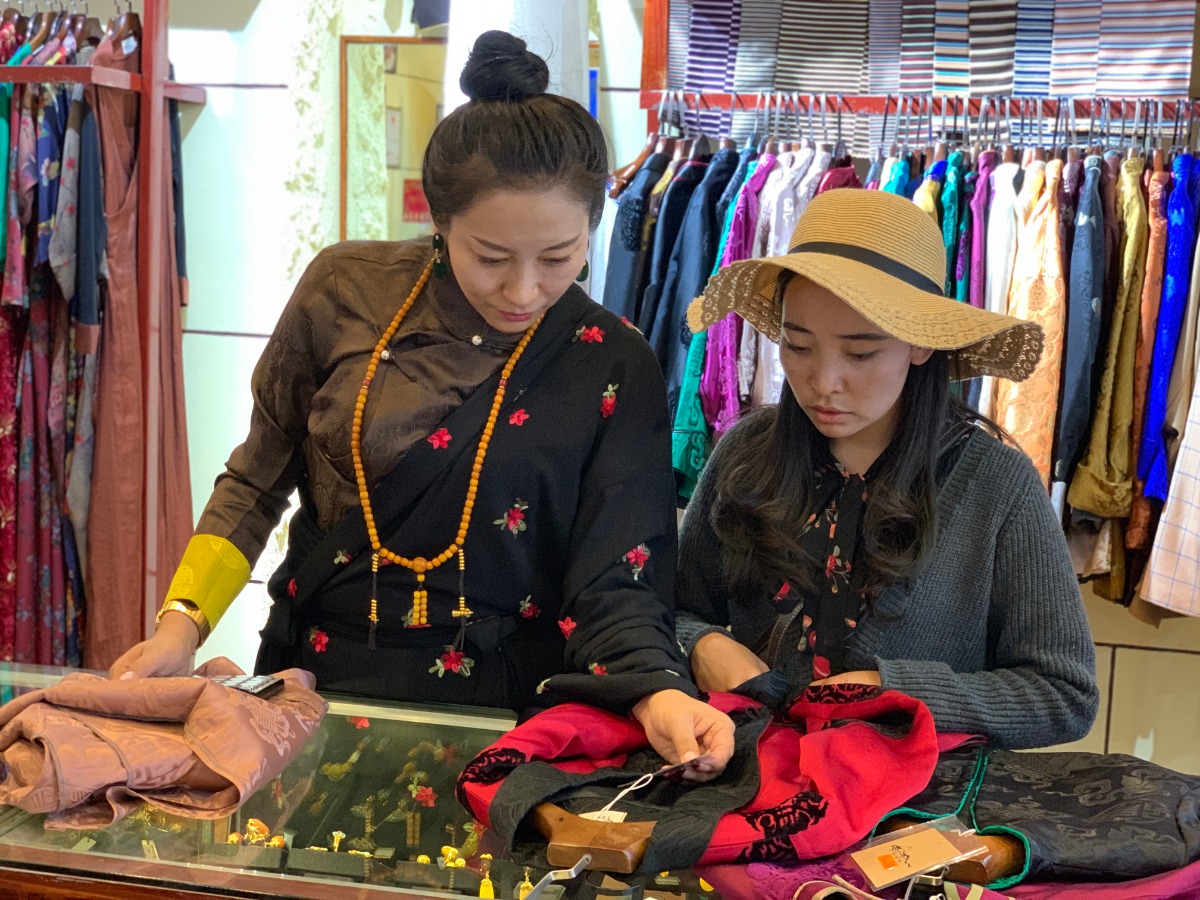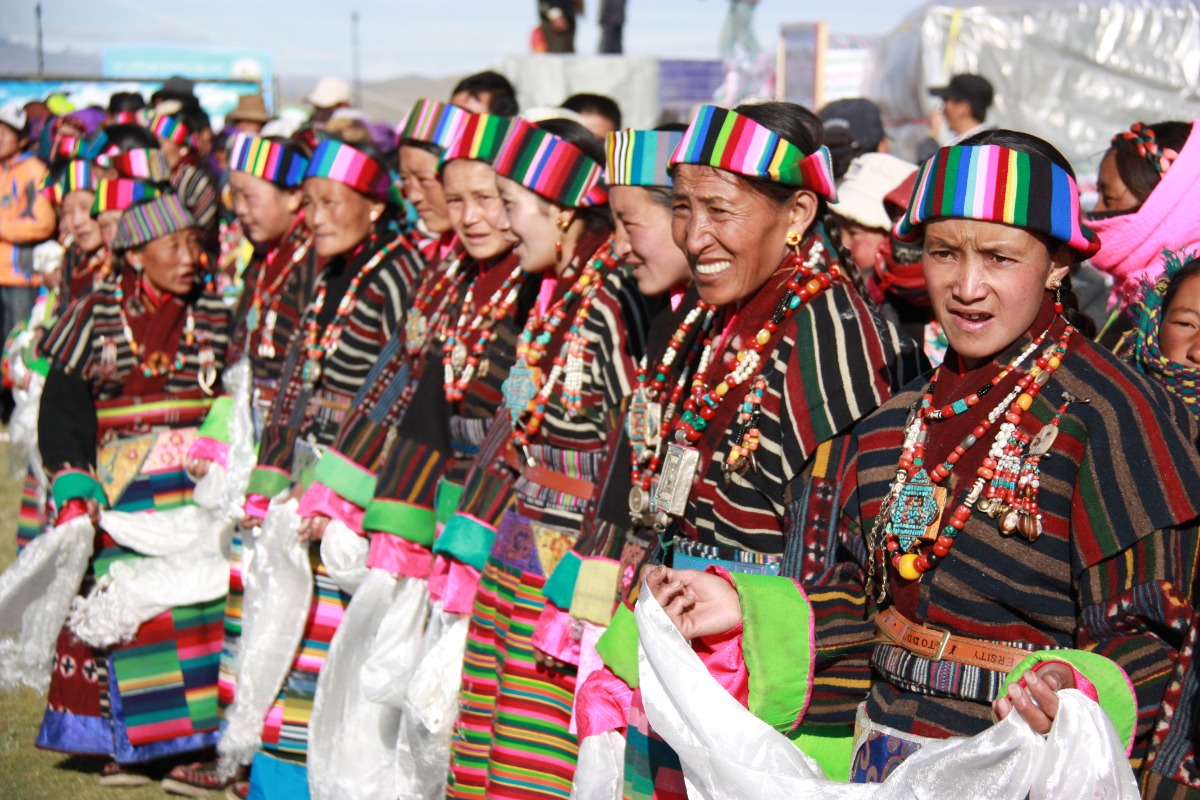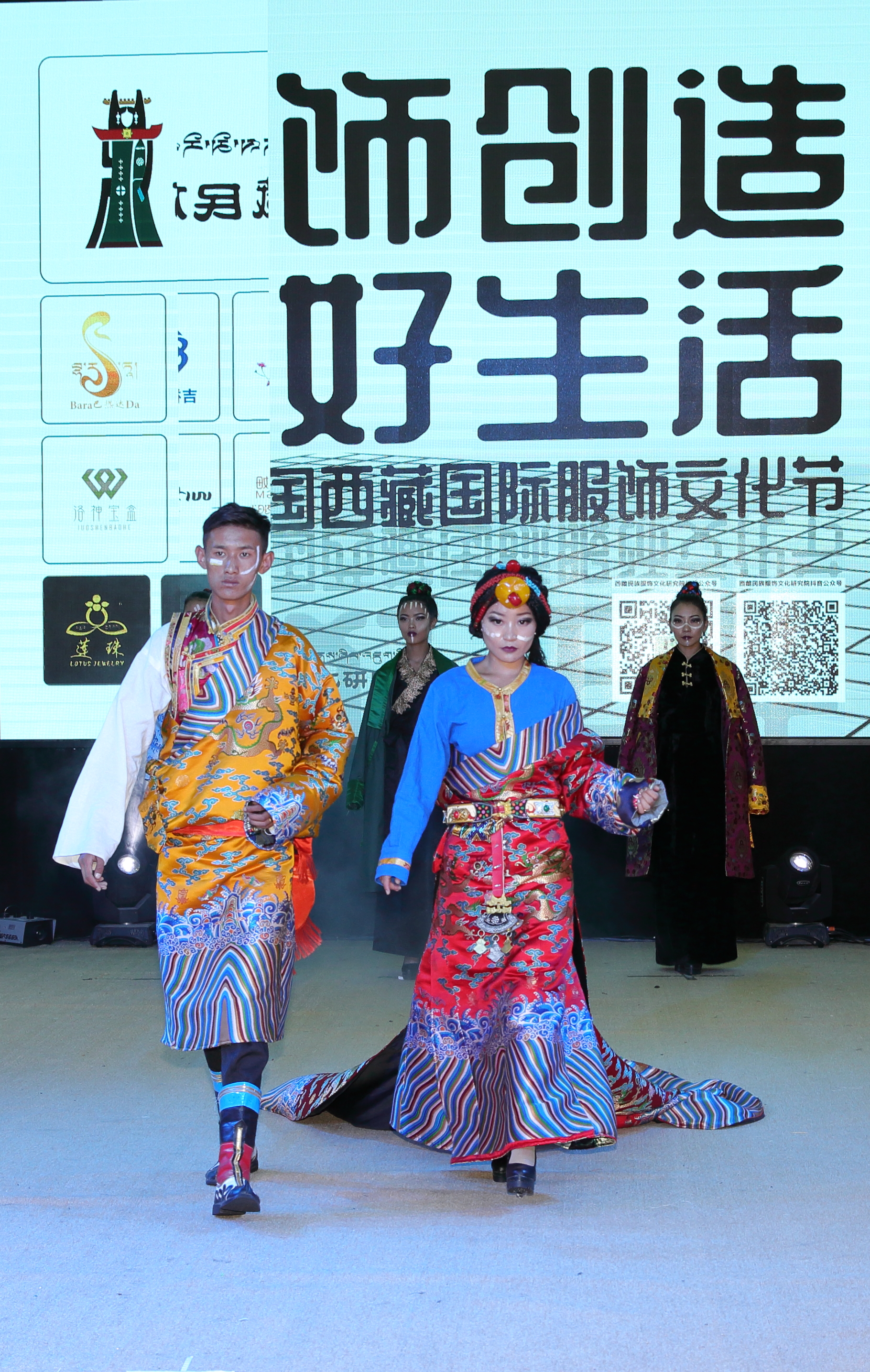
Kelsang, 35, is selling clothing to a customer in her shop in Lhasa, the capital of Tibet Autonomous Region, southwest China. She established her own Tibetan costumes brand "Kewa Rewa," meaning snow mountains in Tibetan, in 2015. (Xinhua/Wang Yangang)
Derived from the unique environment, climate and production and lifestyle in the Himalayas, traditional Tibetan costumes feature wide collars, long sleeves and loose waistlines.
LHASA, Aug. 16 (Xinhua) -- It's not an easy thing to tell the ethnicity of a person on the streets of Lhasa, the capital of Tibet Autonomous Region, as more people, Tibetans or not, have become fans of Tibetan costumes.
Stylish, colorful and exquisite workmanship, modern Tibetan costumes have become attractive and easy to wear.
Derived from the unique environment, climate and production and lifestyle in the Himalayas, traditional Tibetan costumes feature wide collars, long sleeves and loose waistlines.
"Those features make Tibetan costumes multi-functional -- sleeves can be removed and attached to the waist during hot days or at work, and the wide and thick coat can be used as a sleeping bag at night," said Li Mei, director of the Tibet Institute of Ethnic Costumes.
Dorji was a serf before the democratic reform in Tibet that happened 60 years ago. "I had nothing to wear but a robe made of coarse fabric. I slept on the floor at night with nothing but my robe," the 70-year-old man recalled.
"But rich serf owners could wear exquisite costumes made of precious fabric and decorated with jewelry," Dorji said, adding that serf owners had exclusive colors and styles for their clothes.
"Social institution determines the appearance of costumes among different classes, which was especially contrasting in old Tibet," Li said.

Tibetan women wear traditional Tibetan costumes during an event in Tibet Autonomous Region, southwest China. (Xinhua/Wang Yangang)
As the historic reform ushered the region into an era of continuous development, progress and prosperity, Tibetan costumes also embraced a second life.
Gao Furui is a photographer who has also run a Tibetan costume shop on Barkhor Street near Jokhang Temple for three years.
"Tourists and local people like to wear my costumes and hire me as their photographer. The business is doing well," he said.
"Traditional costumes are not convenient to wear, and young generations are reluctant to wear them. They prefer costumes with modern designs and unique characteristics," said Kelsang, who has a boutique shop in a department store in downtown Lhasa.
Kelsang, 35, established her brand "Kewa Rewa," meaning snow mountains in Tibetan, in 2015. Besides herself, she also invites other designers to inject modern elements into her designs.
"I travel a lot looking for suitable fabric for costumes, such as silk from Hangzhou, mulberry silk from Nepal, double-faced wool from Australia," Kelsang said.
At least several hundred cloth materials and styles are available in her shop, which averages around 300,000 yuan (about 42,500 U.S. dollars) in sales each month.
"Unlike the heavy and monotonous costumes my grandparents wore and used as a quilt at night, today's clothes are becoming thinner, lighter, and more comfortable," she said.
Kelsang always wears Tibetan costumes when she is traveling. "In Hong Kong, Hangzhou and Guangzhou, my dressing often drew praise from local people. Some of them liked my costumes so much that they 'stripped' my outfit and paid for it."
She always takes a flexible tape with her, so she can measure the size of buyers and custom-make costumes for them when she comes back.
"It seems to me that Tibetan costumes have drawn more and more fans, and of course the market competition is increasingly fierce. Tibetans are more confident about their culture and appreciative of their ethnic dress, which has put Tibetan costumes on the center stage," Kelsang said.

Models dressed in Tibetan costumes walk on a runway at a culture festival of costumes in Lhasa, the capital of Tibet Autonomous Region, southwest China. (Xinhua/Wang Yangang)



